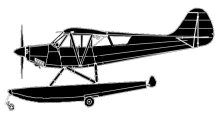
ASN Wikibase Occurrence # 295406
This information is added by users of ASN. Neither ASN nor the Flight Safety Foundation are responsible for the completeness or correctness of this information.
If you feel this information is incomplete or incorrect, you can submit corrected information.
| Date: | Thursday 7 August 2003 |
| Time: | 12:00 LT |
| Type: |  Aviat A-1A |
| Owner/operator: | Private |
| Registration: | N113N |
| MSN: | 1422 |
| Total airframe hrs: | 493 hours |
| Engine model: | Textron Lycoming O-360-A1P |
| Fatalities: | Fatalities: 0 / Occupants: 1 |
| Aircraft damage: | Substantial |
| Category: | Accident |
| Location: | Sitka, Alaska -
 United States of America United States of America
|
| Phase: | Unknown |
| Nature: | Executive |
| Departure airport: | Sitka, AK |
| Sitka, AK (A29) | |
| Investigating agency: | NTSB |
| Confidence Rating: |
In a telephone interview 4 days after the accident, the commercial certificated pilot reported that he was attempting to takeoff from a small, remote lake in his float-equipped airplane. During the takeoff run in calm wind conditions, he determined that the airplane would not become airborne prior to reaching the shoreline. He elected to abort the takeoff, but could not stop the airplane prior to colliding with the shoreline. In a written statement dated 7 days after the accident, the pilot wrote, "I performed a step turn and didn't like the way it felt so I cut the power and skidded up on a rocky beach." The airplane received structural damage to the lower right fuselage longeron adjacent to the right rear float attachment fitting, and the left outboard wing rib. Three months after the accident, the pilot telephoned the NTSB investigator-in-charge and indicated that he had placed the airplane in a tight step-turn during the takeoff attempt, and it was during the step-turn that he heard a loud "pop" and felt the airplane shudder. He said he immediately reduced the engine power to idle, and due to the airplane being in a tight turn at the time, he lost directional control and the airplane collided with the shore. The pilot said it was possible that the right rear float attachment fitting, or possibly the "flying wire" cable from the right float to the fuselage had separated preimpact, and that was the noise he heard.
Probable Cause: The pilot's delay in aborting the takeoff, which resulted in a collision with the shoreline during an aborted takeoff.
Accident investigation:
 |
|
Sources:
NTSB ANC03LA104
Revision history:
| Date/time | Contributor | Updates |
|---|---|---|
| 13-Oct-2022 08:09 | ASN Update Bot | Added |
Corrections or additions? ... Edit this accident description
The Aviation Safety Network is an exclusive service provided by:


 ©2024 Flight Safety Foundation
©2024 Flight Safety Foundation